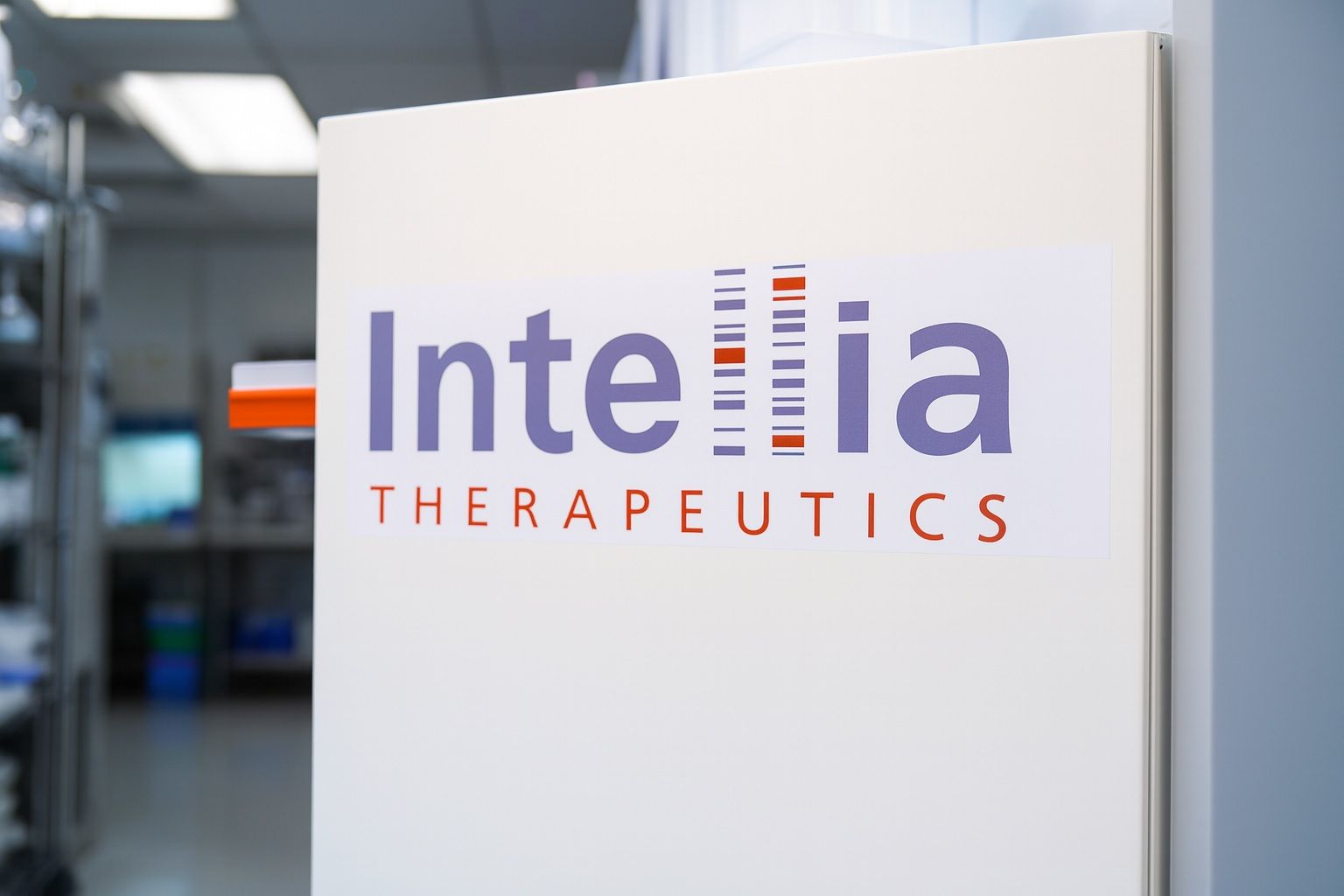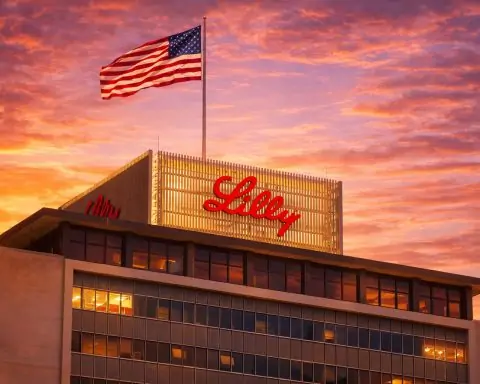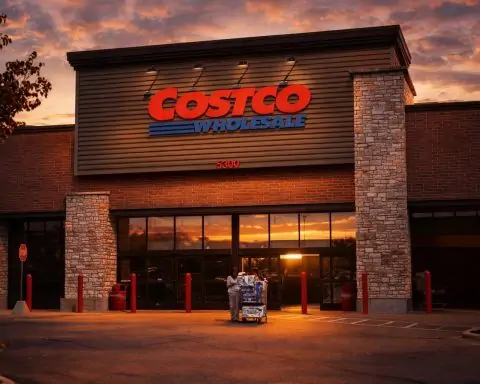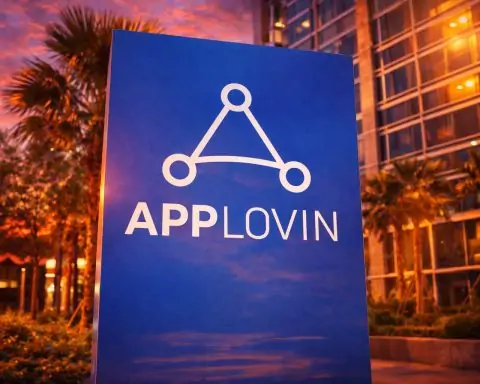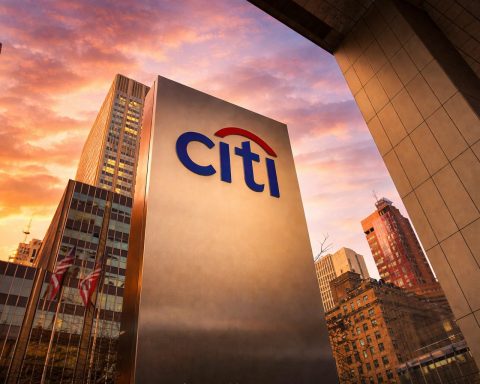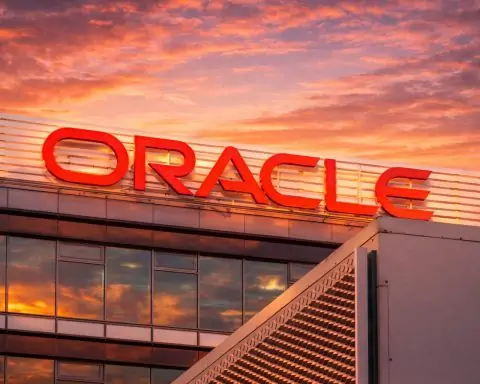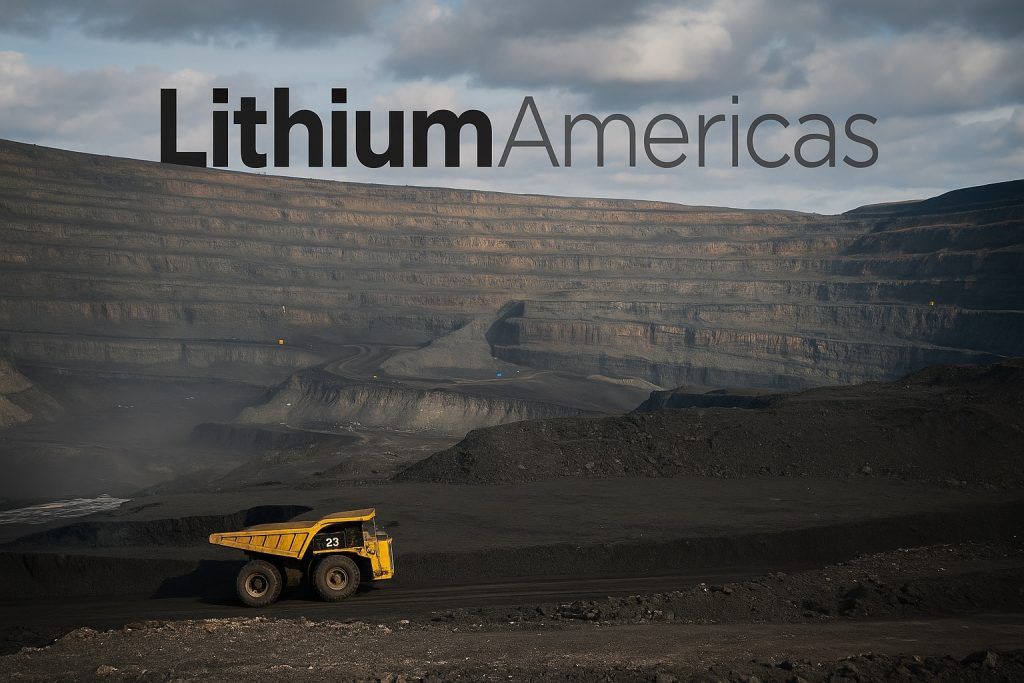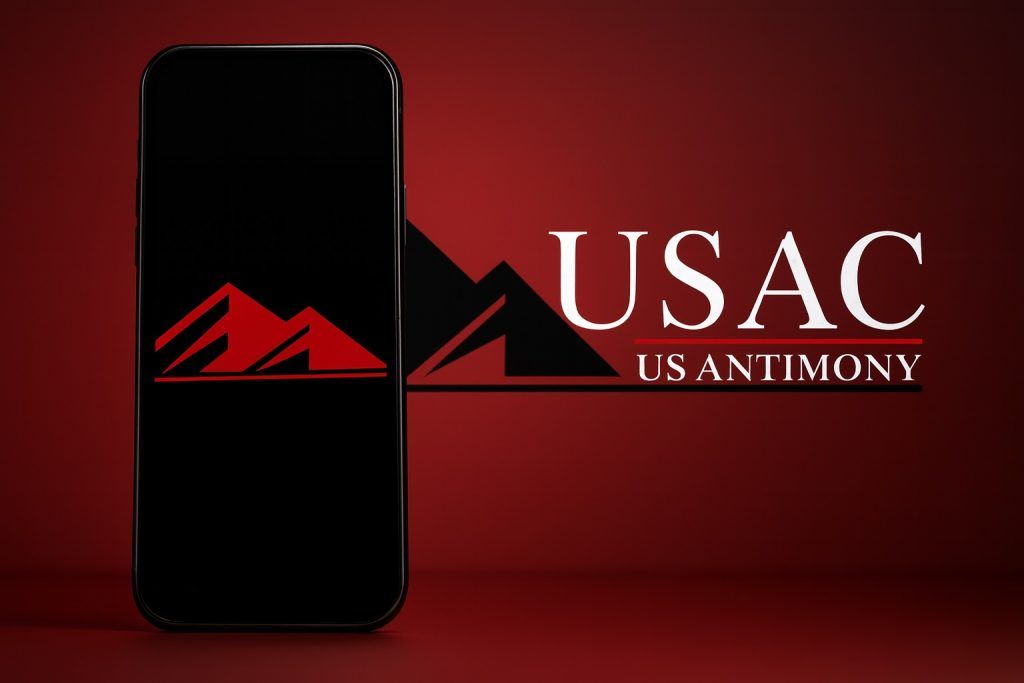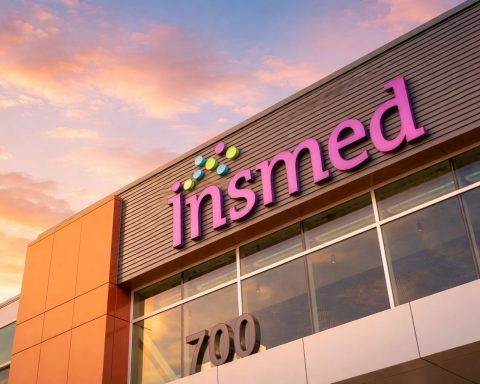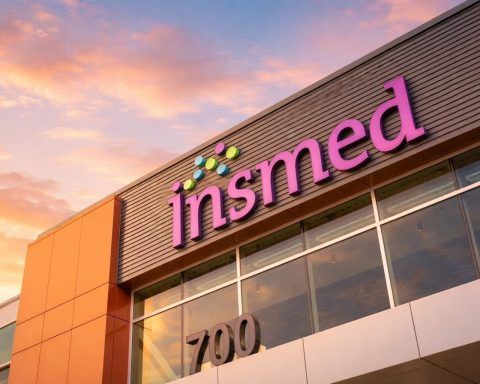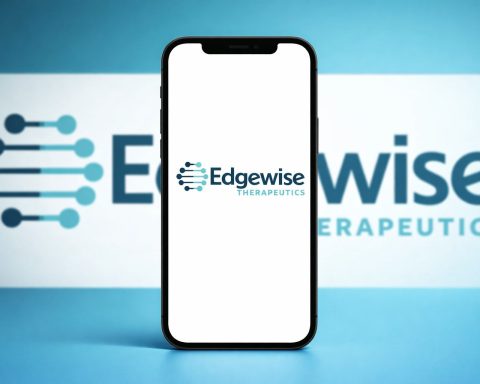- Stock Freefall: Intellia Therapeutics (NASDAQ: NTLA) shares cratered nearly 45% on Monday (Oct. 27, 2025) after the company halted two Phase 3 trials of its leading CRISPR gene-editing therapy due to a serious patient safety event [1] [2]. The stock fell from around $19 to the low teens in a single session, erasing recent gains and dragging down peers like CRISPR Therapeutics (which slid ~10% in sympathy) [3].
- Trial Pause Over Safety: Intellia paused dosing and enrollment in its MAGNITUDE and MAGNITUDE-2 studies of nexiguran ziclumeran (“nex-z” or NTLA-2001) – an in vivo CRISPR therapy for transthyretin (ATTR) amyloidosis – after a participant suffered Grade 4 liver enzyme spikes and elevated bilirubin, indicating severe liver injury [4] [5]. The affected patient was hospitalized, and Intellia is consulting outside experts and regulators on a plan to resume the trials “as soon as appropriate,” according to CEO John Leonard [6] [7].
- CRISPR Pipeline Setback: The safety scare is a major setback for Intellia’s high-profile gene-editing pipeline. The halted therapy, NTLA-2001, is a one-time CRISPR treatment (co-developed with Regeneron) aimed at permanently silencing the gene that causes ATTR amyloidosis [8] [9]. The pause raises questions about its risk-benefit profile, even as Intellia’s other lead program – NTLA-2002 for hereditary angioedema (HAE) – remains on track in Phase 3 with full enrollment achieved ahead of schedule [10] [11].
- Recent Surge on Positive Data: Ironically, the stock’s plunge comes on the heels of an early-October rally fueled by breakthrough clinical data. Intellia revealed 2–3 year Phase 1 results for NTLA-2001 showing ~90% “rapid, deep and durable” reduction in disease-causing TTR protein, with meaningful clinical improvements and no new safety signals [12] [13]. The news – published in NEJM – drove NTLA shares to briefly top $26 on Oct. 8 (a multi-year high), up from ~$19 the week prior [14]. Intellia also completed enrollment in its Phase 3 HAELO trial for NTLA-2002 in just 9 months, bolstering hopes for a one-dose cure for HAE [15] [16].
- Financials & Runway: Intellia is pre-revenue (trailing 12-month revenue ~$53 M) and not yet profitable, but its financial position is solid for now. In Q2 2025 the company reported $14.2 M in collaboration revenue (more than double YoY) and a net loss of $0.98/share, slightly narrower than expected [17]. Cash on hand was ~$630 M (>$700 M in Q1), enough to fund operations into mid-2027 after aggressive cost cuts (a 27% workforce reduction and project pruning) earlier this year [18]. Low debt and a strong liquidity ratio give it some resilience, though the costly trials mean Intellia continues to burn cash.
- Market Sentiment & Outlook: Despite the rout, Wall Street’s long-term view remains optimistic but cautious. Prior to this incident, 17 of 18 analysts rated NTLA a Buy (1 Hold), with an average 12-month price target around $30–32 [19] [20] – implying significant upside from last week’s ~$20 range (and even more from today’s depressed price). Bulls have touted Intellia as a potential “gene-editing goldmine” with blockbuster revenue potential (company models envision up to ~$17 B combined peak sales by 2028 for its two lead therapies) [21]. However, experts have consistently flagged the high risks: one analysis warned that any safety setback could “swiftly reverse” Intellia’s gains [22] – a prophecy now realized – and even bullish firms like Finimize label NTLA a “high-risk, high-reward” bet given its steep valuation and binary clinical outcomes [23].
CRISPR Trial Halt Triggers Sell-Off
Intellia’s stock was hammered on Monday after the biotech stunned investors with news of a clinical trial pause. Before the opening bell, the Cambridge, MA-based company announced it had temporarily halted patient dosing and screening in two late-stage trials of its in vivo CRISPR treatment nexiguran ziclumeran (NTLA-2001) due to a serious adverse event [24]. A patient in the Phase 3 MAGNITUDE study – which tests NTLA-2001 in transthyretin amyloidosis patients with cardiomyopathy (ATTR-CM) – experienced Grade 4 elevations in liver enzymes and bilirubin after receiving the one-time gene therapy [25] [26]. This met the trial’s pre-specified safety threshold for a mandatory pause.
Intellia’s response was swift: dosing of new and existing patients was suspended in both the MAGNITUDE trial and a parallel MAGNITUDE-2 trial for ATTR with polyneuropathy, and regulators were notified [27]. “In line with our commitment to patient safety, we have taken immediate action to temporarily pause enrollment … as we investigate this recent event,” said Intellia President and CEO John Leonard, M.D., adding that the company is “engaging with regulatory authorities and other stakeholders globally to develop a strategy to resume enrollment as soon as appropriate.” [28]. The affected patient has been hospitalized and is receiving medical care, and Intellia is consulting outside experts while exploring risk-mitigation measures before restarting the studies [29] [30].
The news sent shockwaves through the market. Intellia’s stock plunged over 44% in pre-market trading on Oct. 27 [31], and ended the day down roughly 42–50%, by far its worst single-day decline. The share price – which had closed near $19 last week – briefly fell into the $10–11 range, wiping out roughly $1 billion+ in market value. The rout spilled over to other gene-editing stocks: Intellia’s rival CRISPR Therapeutics (CRSP) saw its shares drop about 10% on Monday, as investors reassessed safety risks across the CRISPR field [32]. The broader biotech sector felt a chill, given that CRISPR-based medicines are at the cutting edge of gene therapy and any serious setback raises concerns about the platform’s safety profile.
Context: ATTR amyloidosis is a rare, life-threatening disease in which misfolded transthyretin protein builds up in organs like the heart and nerves. Intellia’s NTLA-2001 (branded “nex-z”) is an experimental one-time IV infusion that uses CRISPR-Cas9 gene editing to “knock out” the defective TTR gene in liver cells, drastically reducing production of the toxic protein. The goal is to provide a durable cure with a single treatment – a holy grail in ATTR, which today is managed with chronic therapies. Existing drugs like Alnylam’s Amvuttra and Pfizer’s Vyndaqel can slow disease progression by targeting transthyretin, but none are curative [33]. Intellia’s approach, delivered via lipid nanoparticles, aims to permanently shut off the gene. That promise had made NTLA-2001 a closely watched program and a linchpin of Intellia’s valuation.
Monday’s safety scare, however, has cast a shadow. The patient’s Grade 4 liver toxicity is considered severe – liver enzyme levels that high can signal risk of liver failure. In its statement, Intellia noted this was a protocol-defined pause, meaning the trial design pre-emptively set criteria to halt if such an event occurred [34]. At the time of the pause, over 650 patients had been enrolled in MAGNITUDE and 47 in MAGNITUDE-2, with roughly 450 patients already dosed with NTLA-2001 across the trials [35]. Investigators will now scrutinize whether the liver injury was directly caused by the gene edit, the lipid nanoparticle delivery, an off-target effect, or some other factor. Intellia emphasized that patient safety is the priority, and Dr. Leonard stressed the company is focused on the affected patient’s health while working to resume the trials “as soon as appropriate.” [36]
From Breakthrough Rally to Safety Setback
The abrupt collapse in Intellia’s stock comes after a period of euphoria for the company and its investors. Just weeks ago, Intellia was riding high on a wave of positive news about its pioneering CRISPR therapies:
- Blockbuster Data: In late September, Intellia unveiled stunning long-term Phase 1 results for NTLA-2001 in ATTR patients. A single dose led to a “rapid, deep and durable” reduction in serum TTR levels – an average ~92% drop at 24 months and ~90% at 36 months, sustained for three years with clinical improvements or stabilization in neuropathy and cardiac function [37] [38]. Crucially, no new serious safety problems emerged in that small Phase 1 cohort [39]. “These data demonstrate rapid, deep and durable TTR reductions with meaningful clinical improvements,” CEO John Leonard said, heralding them as proof-of-concept that CRISPR could effectively halt ATTR disease progression [40] [41]. The results were simultaneously published in the New England Journal of Medicine, lending major credibility.
- HAE Trial Milestone: At the same time, Intellia announced it had fully enrolled the Phase 3 HAELO trial of its second one-shot CRISPR therapy, NTLA-2002, for hereditary angioedema – reaching ~60 patients by Sept. 18, 2025 [42] [43]. Notably, enrollment was completed in just 9 months (faster than anticipated for a rare disease study), reflecting high patient and investigator interest. NTLA-2002 (also known as lonvoguran ziclumeran or “lonvo-z”) aims to functionally cure HAE by disabling the kallikrein gene that triggers severe swelling attacks. Earlier Phase 1/2 data were highly encouraging – a 95–98% reduction in monthly HAE attack rates, with all treated patients remaining attack-free after one CRISPR dose [44] [45]. The rapid enrollment underscored optimism that a one-time gene edit could eliminate a disease that currently requires lifelong medication.
- Stock Surge: This confluence of good news sparked a ferocious rally in NTLA shares through late September and early October. After languishing around ~$6–7 late last year (amid sector-wide pessimism), Intellia’s stock had already climbed back to the high teens by September [46]. The fresh data acted as a catalyst: on Oct. 1, NTLA jumped ~10% intraday to ~$19 [47], and by Oct. 7–8 the stock rocketed past $24, briefly topping $26 in intraday trade [48]. Trading volumes spiked to multi-million-share levels as momentum buyers piled in. The Oct. 8 close marked a new multi-year high for Intellia, and at that point shares were up roughly +150% from their 52-week low (near $6.28) and +60% year-to-date [49] [50]. The company’s market cap swelled above $2.2 B, a heady valuation for a clinical-stage biotech with modest revenue [51] [52].
- “All News Overwhelmingly Positive”: Analysts and industry watchers were openly bullish. “The news flow around early October 2025 is overwhelmingly positive for Intellia’s CRISPR programs,” one analysis gushed [53]. Not only did Intellia achieve a prestigious journal publication and a pivotal trial enrollment milestone, but it also enjoyed growing Wall Street support. In the first week of October, JMP Securities upgraded NTLA to Market Outperform with a $33 target, joining HC Wainwright (which raised its target to $30) and Chardan (a high-end $60 target) in praising Intellia’s prospects [54]. Even star stock-picker Cathie Wood’s ARK Investment Management reportedly bought ~99,000 NTLA shares on the dip earlier in the fall, a sign of conviction in the CRISPR gene-editing theme [55].
Against that backdrop of optimism, the sudden trial setback in late October was especially jarring. The very thesis that had driven Intellia’s rise – that its CRISPR-based cures could be game-changers for severe diseases – is now under a cloud of uncertainty. Investors who chased the stock at $25+ only weeks ago have seen their positions halved virtually overnight, a reminder of the volatility inherent in biotech. As one commentator presciently cautioned when NTLA was soaring: “Bear in mind, any setbacks (e.g. trial delays or safety issues) could swiftly reverse these gains.” [56] Unfortunately for Intellia, those words proved prophetic.
It’s worth noting that this is not the first safety alarm for NTLA-2001. Earlier in 2025, Intellia disclosed another case of elevated liver enzymes (also Grade 4) in its ATTR program. In May, the company reported a patient with asymptomatic ALT/AST spikes that resolved without treatment [57] [58]. Back then, several analysts (at William Blair, BMO, and Truist) downplayed the incident as a “non-concern,” noting it didn’t fundamentally derail the drug’s risk profile and attributing the market’s knee-jerk selloff to broader gene therapy safety jitters in the wake of unrelated trial fatalities [59] [60]. Intellia’s stock fell ~18–26% on that May news but gradually recovered [61].
However, the new adverse event appears more severe and consequential. Unlike the prior case, this patient’s liver injury triggered a formal trial pause and hospitalization, indicating a higher level of concern. It also comes as the patient pool is much larger (hundreds treated) and the trials are at a critical Phase 3 stage. The fact that NTLA-2001 had shown no serious safety red flags in early testing gave investors confidence; now the emergence of a potentially treatment-related Grade 4 toxicity in a larger population is forcing a reset of expectations. Key questions include whether the issue is an isolated idiosyncratic reaction or an indicator of broader risk when dosing more patients. Intellia will likely provide an update once it analyzes the case and consults with the trial’s Data Safety Monitoring Board and regulators. Best-case scenario, the pause could be lifted relatively soon with added precautions (e.g. more frequent liver monitoring or altered dosing). Worst-case, if investigations suggest unacceptable risk, the trials could face a prolonged hold or protocol changes – which would be a major blow to Intellia’s timeline and prospects.
For now, Intellia has not given a specific timeline for resuming MAGNITUDE. The company said it is “weighing risk-reduction steps” and discussing the path forward with regulators [62]. Investors will be awaiting any communication from the FDA or international regulators; a formal clinical hold could potentially be imposed if authorities aren’t satisfied with Intellia’s mitigation plan. The timing is unfortunate for Intellia, which had hoped to complete enrollment in the MAGNITUDE trials by mid-2026 and, if all went well, file for regulatory approval by 2028 [63]. A lengthy pause now may push those targets out. The company’s credibility is also at stake – it must demonstrate that it can effectively manage safety issues in this cutting-edge trial without derailing the entire program.
Pipeline Status: Focus on ATTR and HAE Programs
Even as NTLA-2001’s trials are on hold, Intellia’s broader pipeline of CRISPR therapies remains a tale of two flagship programs:
- NTLA-2001 (nex-z) for ATTR: This is Intellia’s most advanced candidate – an in vivo CRISPR-Cas9 therapy delivered via lipid nanoparticles to knock out the TTR gene in liver cells. It is being co-developed with partner Regeneron under a 2016 collaboration that greatly supported Intellia’s early development [64]. The MAGNITUDE (ATTR-CM) and MAGNITUDE-2 (ATTRv-PN) trials, launched in late 2024/early 2025, together aim to enroll over 1,000 patients worldwide (initial target ~650 by end of 2025, with expansion planned) [65]. The program holds FDA Orphan Drug and RMAT (Regenerative Medicine Advanced Therapy) designations, which could speed the review process [66]. Until this week, NTLA-2001’s data looked very promising: the Phase 1 interim results showed unprecedented TTR reduction and hints of clinical benefit [67], supporting the notion that suppressing the disease protein translates into patient improvement. If successful, NTLA-2001 could become the first curative treatment for ATTR amyloidosis, a disease afflicting tens of thousands of patients globally. Analysts had pegged its annual sales potential in the billions (Intellia cited a possible ~$12 B peak revenue) [68]. But all that potential hinges on safety and efficacy in Phase 3. Now, with the trial pause, the fate of NTLA-2001 is uncertain. Intellia and Regeneron will need to carefully assess whether the benefit to patients (halting a fatal disease) outweighs the risks, and whether dosing or patient selection adjustments can improve the safety profile. Importantly, no other gene-editing therapy for ATTR is as far along, so the burden is on Intellia to show that CRISPR can beat the disease without dangerous side effects.
- NTLA-2002 (lonvo-z) for HAE: This program offers a bright spot amid Intellia’s challenges. NTLA-2002 is an in vivo CRISPR therapy designed to permanently disable the KLB1 gene, which encodes a protein (kallikrein) that drives hereditary angioedema attacks. HAE is a rare genetic disorder causing recurrent episodes of severe swelling; current prophylactic treatments are burdensome and expensive. Intellia’s Phase 1/2 data were jaw-dropping – a single dose of NTLA-2002 led to a ~95% drop in attack frequency and kept patients attack-free over many months [69]. Based on that, the pivotal HAELO trial was initiated and hit full enrollment (60 patients) this September [70]. Intellia had previously indicated plans to file for approval in 2026 if Phase 3 is successful [71]. Notably, the safety profile of NTLA-2002 thus far appears benign; no serious adverse events were highlighted in early studies. And because HAE patients are otherwise healthy between attacks, regulators will have a low tolerance for safety issues – meaning NTLA-2002 must show a clean profile. The good news for Intellia is that NTLA-2002’s mechanism and target are different from NTLA-2001’s (different gene, different disease), so the liver toxicity seen in the ATTR trial may not have any read-across to HAE. Thus, at this time NTLA-2002’s development is unaffected. Intellia has a lot riding on this program as well, and investors will watch for Phase 3 readouts in 2026. If positive, NTLA-2002 could reach the market by ~2027 and become the first one-time gene therapy for HAE – a multi-billion dollar commercial opportunity by some estimates [72]. In fact, some analysts have suggested NTLA-2002 might ultimately be more valuable than NTLA-2001, given HAE’s more predictable patient population and the lack of competing CRISPR treatments in that indication.
Beyond these two core programs, Intellia’s earlier-stage pipeline is relatively limited following recent refocusing. The company discontinued NTLA-3001 (a candidate for alpha-1 antitrypsin disease) and other non-core projects to conserve resources [73] [74]. It does have a few preclinical collaborations: for example, partnerships with AvenCell, Kyverna, ONK Therapeutics, and ReCode to apply its CRISPR platform to cell therapies and novel delivery systems [75]. These alliances allow larger partners to leverage Intellia’s genome-editing know-how in areas like CAR-T cell therapy or genetic neurological diseases, while Intellia focuses on its late-stage in vivo programs. None of those earlier programs are near-term revenue drivers, however. This means that Intellia’s fortunes in the next couple of years are largely tied to NTLA-2001 and NTLA-2002. If both succeed clinically and win approval, Intellia could emerge as a leader in the genomic medicine space. If one or both falter, the company’s path to commercialization (and profitability) would be significantly delayed, likely requiring fresh capital or partnerships to stay afloat.
Financial Health and Strategic Partnerships
As a clinical-stage biotech, Intellia relies on its cash reserves and partners to fund R&D. The company has been proactive in managing its finances to weather the long development road:
- Balance Sheet: Intellia reported approximately $630 million in cash and short-term investments as of mid-2025 [76] [77]. This war chest was bolstered by past equity raises and lucrative partnerships. Intellia’s leadership projects that its cash runway extends into the first half of 2027, assuming no major new revenue – a relatively long runway by biotech standards [78] [79]. This should give the company breathing room to complete its Phase 3 trials and even prepare for potential product launches without immediate need for financing (barring unforeseen setbacks). The low debt (debt-to-equity ~0.14) and strong current ratio (~5x) further indicate Intellia is not under near-term financial distress [80] [81].
- Revenues and Expenses: Intellia’s revenue at this stage comes mainly from collaboration payments (e.g. milestone payments from partners). In Q2 2025 it recorded $14.2 M of revenue, more than double the prior year’s quarter, thanks in part to reaching a development milestone [82]. For the full year 2025, analysts expect only modest revenues (tens of millions), since no product is on the market. Meanwhile, operating expenses remain high – Intellia spends over $70–80 M per quarter on R&D and G&A combined. In the first half of 2025, Intellia’s net profit margin was around –900%, meaning it spent about 10x what it earned [83] [84]. The Q2 net loss was ~$78 M (–$0.98 per share), which was actually an improvement from a loss of –$1.52 per share a year earlier [85]. Management’s cost-cutting efforts – including laying off 27% of staff and consolidating facilities in January 2025 – have trimmed the burn rate and extended the cash runway [86] [87]. Intellia has signaled it will prioritize spending on the ATTR and HAE programs (which are most likely to pay off) and hold off on riskier early-stage projects. This disciplined approach was viewed positively by investors, as it reduces the likelihood of dilutive stock offerings in the near term [88].
- Valuation: Even after the recent drop, Intellia’s stock is not “cheap” by traditional metrics. Prior to the safety incident, NTLA traded around 49× trailing 12-month sales and over 9× enterprise value-to-sales (EV/S) based on 2025 estimates [89] [90]. Such rich multiples reflect the market’s expectation of future growth rather than current fundamentals. With no approved products, Intellia’s valuation is essentially a bet on its pipeline’s success. The collapse in share price this week suggests that investors are dramatically re-pricing the risk. If NTLA-2001 faces delays or fails, analysts will have to cut their revenue projections, which could make the stock’s earlier ~$20+ price seem overvalued. Conversely, if the issue is resolved and trials resume, the stock could regain some lost ground as confidence returns. At around ~$11 per share now, Intellia’s market cap is roughly $1.2 B (enterprise value ~$600 M after cash), which may appear more modest relative to its multi-billion dollar peak sales ambitions. But it’s important to note that valuations in biotech can swing wildly with clinical outcomes – a binary “pass/fail” trial result can justify either a multi-fold increase or further decline from here.
- Partnerships: A key strength for Intellia is its roster of big-name partners, which not only provide funding but also validation of its technology. The most significant is Regeneron Pharmaceuticals, which in 2016 struck a broad alliance with Intellia. Regeneron invested $70 M initially and collaborates on up to 15 targets, including NTLA-2001 for ATTR [91]. In fact, Regeneron’s expertise in antibodies and clinical development has been valuable in designing and running the ATTR trials. The partnership gives Regeneron a sizeable stake (and profit share) in NTLA-2001’s success, aligning the companies’ interests [92]. Regeneron has also expanded the collaboration twice, underscoring its commitment to CRISPR therapeutics. Other partners include Novartis (via a now-concluded Caribou deal) for certain CAR-T programs, AvenCell (joint venture) on allogeneic cell therapy, Kyverna on autoimmune disease targets, ONK Therapeutics on natural killer cell therapies, and ReCode Therapeutics on LNP delivery improvements [93]. These deals often involve Intellia licensing its CRISPR platform or specific IP in exchange for upfront payments, R&D cost-sharing, and potential milestones/royalties. They effectively allow Intellia to extend its reach beyond its internal pipeline without straining its own resources. Importantly, none of these partnerships are expected to generate near-term revenue comparable to a product launch, but they do provide a financial cushion and external endorsement. For example, in Q2 Intellia’s revenue jump was partly due to a collaboration milestone (likely from one of these partners) [94].
In summary, Intellia enters this turbulent period with sufficient cash and partner support to absorb some delays. The company’s careful budgeting and alliances mean it can continue operations and trial work without immediate fear of running out of funds. This is crucial because it gives Intellia time to solve the scientific and regulatory challenges presented by the MAGNITUDE trial pause. Many small biotechs confronted with a major trial setback also face a cash crunch; Intellia fortunately is not in that dire position. It can afford to investigate the safety issue thoroughly and potentially adjust its development plans. However, prolonged trouble could eventually force the company to seek additional capital (via stock offerings or a larger strategic partnership), especially if timelines to approval shift beyond 2027.
Market Sentiment & Analyst Outlook
The dramatic events of Oct. 27 have understandably rattled investors, but it’s instructive to examine how analysts and market observers are interpreting Intellia’s situation. Sentiment on NTLA is split between long-term optimism and short-term caution, reflecting the high stakes of gene-editing stocks:
- Wall Street Consensus: Even after Monday’s drop, the consensus rating on Intellia remains bullish – though this consensus was formed before the safety pause news and may evolve. According to TipRanks data (as of late October), 17 out of 18 analysts covering NTLA rated it a Buy/Strong Buy, with just 1 Hold and zero Sells [95]. The average 12-month price target was about $31–32 per share [96], which at last week’s ~$20 price implied ~60% upside and now implies nearly a triple from the current ~$11 level. Price targets among analysts span a wide range – roughly $12 on the low end to $60+ on the high end [97] – underscoring the uncertainty and differing risk appetites. For instance, Chardan Capital has been notably bullish (a $60 target), betting Intellia’s therapies will eventually dominate their niches [98]. On the other side, Wedbush Securities has maintained a starkly bearish stance, keeping a Neutral rating with a $7 price target – a target now not far from the actual stock price after the plunge [99]. Wedbush’s skepticism stems from concerns about “lengthy timelines” and potential competition, effectively cautioning that Intellia’s valuation was overheated [100]. This week’s developments may validate some of those conservative assumptions. Overall, the Street’s base case prior to the safety issue was that Intellia will succeed in bringing at least one of its CRISPR drugs to market by 2027–2028, and that the company’s platform could generate substantial revenue in the 5+ year horizon. That thesis is now being re-tested.
- Revised Views After the Pause: In the immediate aftermath of the trial halt, a few analysts have commented that the sell-off, while severe, might be overdone if the safety issue proves manageable. No major brokerage had downgraded the stock at the time of writing, but many indicated they are awaiting more details. Some pointed out that gene therapy stocks often dip on safety headlines even if the long-term impact is minor – a pattern seen with other companies in 2023–2025 [101]. For example, BMO Capital analysts (back in May’s event) argued Intellia’s stock reaction was “more due to recent patient deaths in the gene therapy space than the severity of this particular incident,” urging investors not to panic prematurely [102]. It’s likely that a similar attitude may emerge now: cautious optimism that this is a hurdle, not a brick wall. However, it will depend on what Intellia’s investigation finds. If the pause is lifted within weeks and the patient recovers, analysts may breathe a sigh of relief and focus back on the drug’s efficacy. If the issue signals a deeper problem (e.g. an immune reaction to CRISPR or a toxicity of the lipid delivery), then we could see downgrades and target cuts as the development program’s outlook darkens.
- High-Risk, High-Reward Label: Financial commentators often describe Intellia as the epitome of a high-risk/high-reward biotech. Investment platform Finimize, for instance, noted that Intellia trades at a steep valuation premium relative to its current sales and warned of its negative free cash flow, concluding that the stock is a “high-risk, high-reward” story – one suited only for investors who can stomach volatility [103]. That characterization certainly rings true this week. Intellia’s beta (a measure of volatility) was around 2.3, meaning it tends to be more than twice as volatile as the overall market. Monday’s crash exemplified that outsized volatility on the downside. Yet, for believers, the upside could be equally dramatic: if Intellia eventually brings a functional cure for ATTR or HAE to market, the company could see multi-fold revenue growth and the stock could potentially revisit highs far above its current price. Some bullish analysts have even mused that Intellia’s market value could increase ten-fold in the long run if both NTLA-2001 and NTLA-2002 achieve their forecasted peak sales (~$17 B combined) [104]. Of course, those projections are speculative and assume everything goes right – an assumption now plainly challenged by reality.
- Expert Quotes: Company executives and independent experts have been weighing in on what the trial pause means. CEO John Leonard has consistently expressed confidence in the science behind NTLA-2001. While acknowledging the setback, he emphasizes that the therapy’s benefit – dramatic TTR reduction – remains clear, and that Intellia will work diligently with authorities to ensure patient safety while moving forward [105]. “We also are engaging with regulatory authorities and other stakeholders globally to develop a strategy to resume enrollment as soon as appropriate,” Leonard assured investors [106], signaling that the company does not view the program as lost. On the other hand, some clinicians note that safety will ultimately dictate CRISPR’s success: “The promise of one-and-done gene editing is huge, but we must prove we can do it safely,” said one expert in gene therapy (not directly involved with Intellia) on a recent panel. They pointed out that traditional gene therapies using viral vectors have had well-documented safety incidents, and gene editing – while more precise – is not risk-free. How Intellia addresses this liver toxicity will be a test watched by the entire field.
- Competition and Sector Impact: Analysts also contextually look at Intellia relative to its competitors. CRISPR Therapeutics (CRSP), for instance, has already achieved a milestone with an approved ex vivo CRISPR therapy (Casgevy for sickle cell disease) and is exploring in vivo approaches [107]. CRSP’s stock, at ~$70+ before Monday, reflects more proven success but also faced pressure this week as investors reassess the viability of systemic CRISPR treatments. Editas Medicine (EDIT) and Beam Therapeutics (BEAM), other gene-editing players, have earlier-stage programs and much smaller market caps [108], so their stocks didn’t react as dramatically. Nonetheless, Intellia’s hiccup raises the question: will regulators become more cautious about gene-editing trials? The FDA has previously placed holds on novel gene therapies when serious adverse events occurred. It’s possible that Intellia’s experience could lead to closer safety monitoring requirements for similar trials, or at least inject a note of caution into exuberant forecasts for the sector. In the long run, however, each company’s prospects will hinge on their own data. If Intellia can resolve this issue and demonstrate that NTLA-2001’s benefits outweigh the risks, it could still emerge as a leader in in vivo gene editing. If not, others like CRISPR Therapeutics or Beam (which uses base-editing tech that might have different safety profiles) will try to fill the void.
Looking ahead, Intellia’s stock will likely remain volatile as new information emerges. In the short term, market sentiment is jittery – any hint from the company or regulators could send shares swinging further. In the medium term, scheduled catalysts such as the first data readout from the HAE Phase 3 trial (expected sometime in 2026) and any interim updates on the ATTR trials will be critical. Positive HAE results, for example, could rekindle enthusiasm and validate Intellia’s platform even if the ATTR program has hurdles. Conversely, if HAE or other programs stumble, Intellia would face tougher questions about the viability of in vivo CRISPR editing.
For investors and observers, Intellia Therapeutics now stands at a crossroads: it has shown tantalizing potential to revolutionize medicine with one-shot cures, yet it must navigate the perilous minefield of human biology and drug development. The next few weeks and months – as Intellia addresses the safety issue and engages with regulators – will be crucial in determining whether NTLA’s October crash was a temporary setback on the road to biotech history, or a sign of more challenges to come. The stakes are high, not just for Intellia’s shareholders but for the broader promise of CRISPR medicine. As one analyst summed up, Intellia remains “an ambitious pioneer in gene editing with tremendous upside, but one for investors with a strong stomach for risk.” [109] [110]
Sources: Intellia Therapeutics press release & SEC filing [111] [112]; Reuters [113] [114]; Investing.com [115] [116]; TipRanks [117] [118]; TechStock² (ts2.tech) analysis [119] [120]; BioSpace [121] [122]; Intellia investor reports and company statements.
References
1. www.reuters.com, 2. ca.investing.com, 3. ca.investing.com, 4. www.reuters.com, 5. ca.investing.com, 6. www.reuters.com, 7. ca.investing.com, 8. www.reuters.com, 9. ts2.tech, 10. ts2.tech, 11. ts2.tech, 12. ts2.tech, 13. ts2.tech, 14. ts2.tech, 15. ts2.tech, 16. ts2.tech, 17. ts2.tech, 18. ts2.tech, 19. ts2.tech, 20. www.tipranks.com, 21. ts2.tech, 22. ts2.tech, 23. ts2.tech, 24. www.reuters.com, 25. www.reuters.com, 26. ca.investing.com, 27. ca.investing.com, 28. ca.investing.com, 29. www.reuters.com, 30. ca.investing.com, 31. www.reuters.com, 32. ca.investing.com, 33. www.reuters.com, 34. ca.investing.com, 35. ca.investing.com, 36. ca.investing.com, 37. ts2.tech, 38. ts2.tech, 39. ts2.tech, 40. ts2.tech, 41. ts2.tech, 42. ts2.tech, 43. ts2.tech, 44. ts2.tech, 45. ts2.tech, 46. ts2.tech, 47. ts2.tech, 48. ts2.tech, 49. ts2.tech, 50. ts2.tech, 51. ts2.tech, 52. ts2.tech, 53. ts2.tech, 54. ts2.tech, 55. ts2.tech, 56. ts2.tech, 57. www.biospace.com, 58. www.biospace.com, 59. www.biospace.com, 60. www.biospace.com, 61. www.biospace.com, 62. www.reuters.com, 63. ts2.tech, 64. ts2.tech, 65. ts2.tech, 66. ng.investing.com, 67. ts2.tech, 68. ts2.tech, 69. ts2.tech, 70. ts2.tech, 71. ts2.tech, 72. ts2.tech, 73. ts2.tech, 74. ts2.tech, 75. ts2.tech, 76. ts2.tech, 77. ts2.tech, 78. ts2.tech, 79. ts2.tech, 80. ts2.tech, 81. ts2.tech, 82. ts2.tech, 83. ts2.tech, 84. ts2.tech, 85. ts2.tech, 86. ts2.tech, 87. ts2.tech, 88. ts2.tech, 89. ts2.tech, 90. ts2.tech, 91. ts2.tech, 92. ts2.tech, 93. ts2.tech, 94. ts2.tech, 95. www.tipranks.com, 96. www.tipranks.com, 97. ts2.tech, 98. ts2.tech, 99. ts2.tech, 100. ts2.tech, 101. www.biospace.com, 102. www.biospace.com, 103. ts2.tech, 104. ts2.tech, 105. ca.investing.com, 106. ca.investing.com, 107. ts2.tech, 108. ts2.tech, 109. ts2.tech, 110. ts2.tech, 111. www.sec.gov, 112. ca.investing.com, 113. www.reuters.com, 114. www.reuters.com, 115. ca.investing.com, 116. ca.investing.com, 117. www.tipranks.com, 118. www.tipranks.com, 119. ts2.tech, 120. ts2.tech, 121. www.biospace.com, 122. www.biospace.com
